If you're new here, you may want to subscribe to my RSS feed. Thanks for visiting!
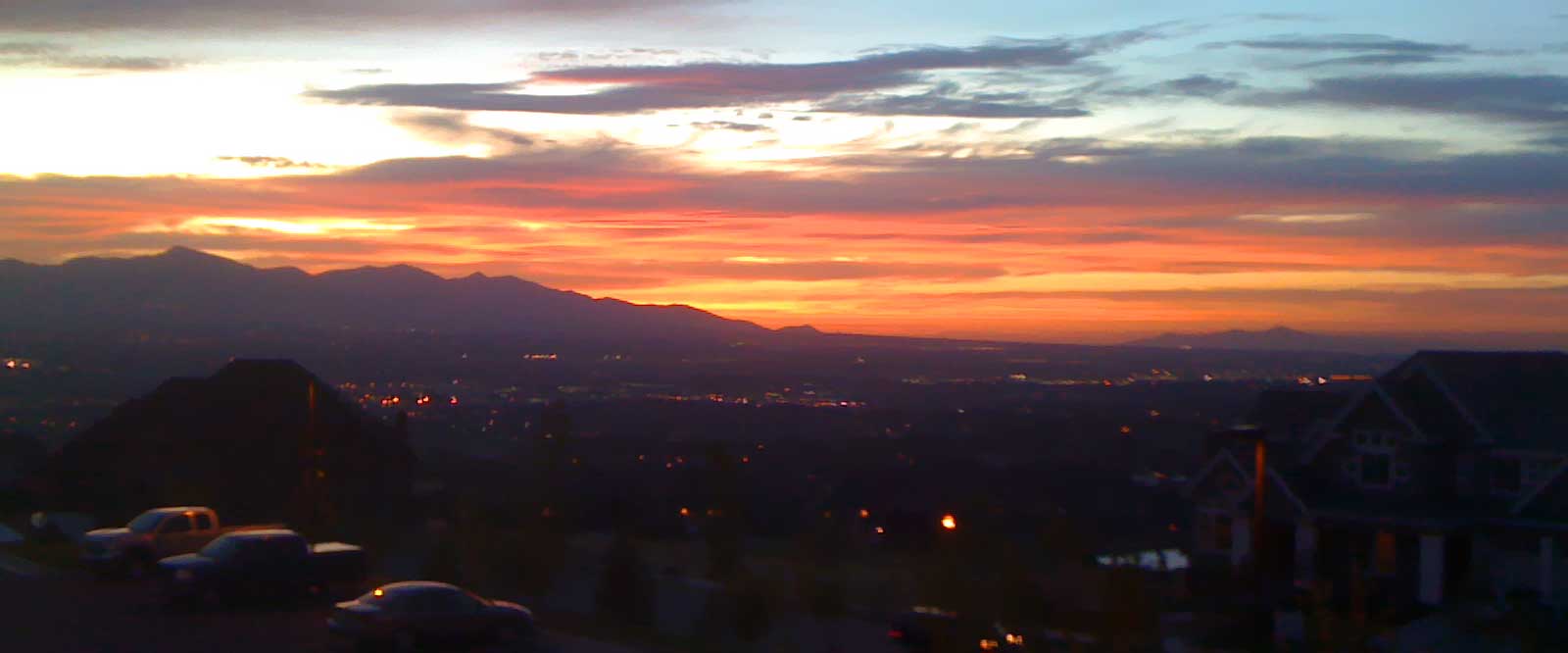
View of Salt Lake Valley from the Draper Temple on July 10, 2009. The Jordan River and Oquirrh Mountain temples are in the distance.
On Sunday I had the opportunity of going to the Daybreak Stake Center in South Jordan and listening to a wonderful fireside given by Dr. Daniel C. Peterson about the temple. I audio recorded the fireside, and have a digital copy. Unfortunately, I haven’t been able to get a hold of Dr. Peterson to ask permission to post it on TempleStudy.com. But as I said previously, I also took notes as well as I could, and I hope that they might reproduce some of the excellent thoughts Dr. Peterson conveyed. [Note: Not all of the images below are the exact same as Dr. Peterson used, but I have tried to use similar ones.]
One of the first things he said was that the dedication of the Oquirrh Mountain Temple (which stands only a few blocks from the stake center) would be, in a way, a fulfillment of prophecy.
I believe he said it was Brigham Young that prophesied that one day you’d be able to stand on the roof of a temple and see another temple. Dr. Peterson noted that you don’t even have to stand on the roof to see several temples today. [This insight is interesting in that I just attended a sealing session at the Draper Temple on Friday. After we were finished and exited the temple we saw the most gorgeous sunset from the grounds, peering out over the Salt Lake Valley. From our vantage point we could see both the Jordan River Temple and the Oquirrh Mountain Temple. I took several pictures, one of which is at the beginning of the post.]
Dr. Peterson cautioned that there are clearly some things that we can’t talk about the temple, but said that many of the things that he and others, such as Hugh Nibley, have spoken about in the ancient world hint at certain things in our modern temple if we listen or read closely. The temple is a testimony of the divine calling of Joseph Smith.
Ascent Stories
He and a colleague at BYU have a dream of publishing a book about celestial ascent stories from around the world. This is because they are so pervasive, and similar all over the world.
An example of an ascent story is Paul in 2 Corinthians 12:
2 I knew a man in Christ above fourteen years ago, (whether in the body, I cannot tell; or whether out of the body, I cannot tell: God knoweth;) such an one caught up to the third heaven.
3 And I knew such a man, (whether in the body, or out of the body, I cannot tell: God knoweth;)
4 How that he was caught up into paradise, and heard unspeakable words, which it is not lawful for a man to utter. (2 Cor. 12:2–4)
There are 3 elements that are interesting to Latter-day Saints in this account:
- 3rd heaven
- Paradise
- Unspeakable words – the original language used here implies words that one is not able to speak or beyond the capacity to utter, as well as things he was not permitted to speak.
The typical Hebrew cosmology contains these same elements of several heavens. Showed a diagram of the Hebrew Cosmology, showing Sheol (signifying the Spirit World, where spirits are questioned), the Earth, First, Second, and Third Heavens. Shows the firmament of heaven as a dashed line, with an ocean above, and that the ancients thought that it rained because of the openings in this firmament, in the spirit of “opening the windows of heaven.” Shows the earthly temple mirroring the temple in the third heaven above.

The Ladder of Divine Ascent, Monastery of St. Catherine, Sinai, 12th Century (click for larger view)
This idea of ascent is all over in the scriptures. Showed a photo of a painting of Jacob’s Ladder from St. Catherine’s Monastery from the 12th century – the “Ladder of Divine Ascension.” People shown going up the ladder, some falling off. Comes from the story of Bethel, beth-el literally meaning the “house of God.”
Showed photo of the Ascension of Christ found in northern Italy, and is an ivory panel from c. 400, now in Munich. Christ ascends from the temple on a ladder with the hand of God extending through the cloud to grasp Christ’s, and pull him through. This motif of the hand of God reaching through the cloud is a common motif found in the ancient world. [See Dr. William Hamblin and Dr. David Seely’s excellent presentation, part 1, part 2, on that subject.]
3 Nephi 28 is an ascension text. First of all, verse 10:
10 And for this cause ye shall have fulness of joy; and ye shall sit down in the kingdom of my Father; yea, your joy shall be full, even as the Father hath given me fulness of joy; and ye shall be even as I am, and I am even as the Father; and the Father and I are one; (3 Nephi 28:10)
There is a mathematical formula which says that if a = b, and b = c, then a = c. That is what we have here. Ye shall be even as I am, and I am even as the Father, meaning ye shall be even as the Father is. Many people say that human deification came late in the teachings of Joseph Smith, but there it is in the Book of Mormon.
12 And it came to pass that when Jesus had spoken these words, he touched every one of them with his finger save it were the three who were to tarry, and then he departed.
13 And behold, the heavens were opened, and they were caught up into heaven, and saw and heard unspeakable things.
14 And it was forbidden them that they should utter; neither was it given unto them power that they could utter the things which they saw and heard;
15 And whether they were in the body or out of the body, they could not tell; for it did seem unto them like a transfiguration of them, that they were changed from this body of flesh into an immortal state, that they could behold the things of God.
16 But it came to pass that they did again minister upon the face of the earth; nevertheless they did not minister of the things which they had heard and seen, because of the commandment which was given them in heaven. (3 Nephi 28:12–16)
Compare this passage with Paul’s. It’s a similar experience. The three Nephites heard unspeakable things which they were forbidden to utter. They were transfigured in some sense, transformed.
Dante’s Divine Comedy is a comedy because it ends in heaven. But it starts out in hell. It is a long complex story of ascension. Mount Purgatory diagram shown. Also Dante’s Geocentric Universe with multiple heavens. This same pattern is everywhere in the ancient world. Dante ascends through many heavenly spheres to the 10th heaven. As he ascends each he obtains the virtues and knowledge necessary to enter into the presence of God.
Mountains of the Lord
This idea of the mountain is everywhere. It is the Mountain of the Lord, the cosmic mountain, that shows up all over the ancient world. The Mountain of Paradise. Mount Olympus. Mount Sinai – Moses ascends the mount. The Mount of Transfiguration. The early Latter-day Saints would go to the tops of mountains on their journeyings across the country and dress in their temple clothing to pray. Elder George Q. Cannon received his endowment on Ensign Peak.
The Psalms have much to do with ascent. The Psalms of Ascent – chapters 120-134. The Pilgrims songs. These were the hymns pilgrims would sing as they ascended to Jerusalem to the temple. When you go to Jerusalem you have to climb through the mountains to get there, no matter the direction you go.
2 And it shall come to pass in the last days, that the mountain of the Lord’s house shall be established in the top of the mountains, and shall be exalted above the hills; and all nations shall flow unto it.
3 And many people shall go and say, Come ye, and let us go up to the mountain of the Lord, to the house of the God of Jacob; and he will teach us of his ways, and we will walk in his paths: for out of Zion shall go forth the law, and the word of the Lord from Jerusalem. (Isa. 2:2–3)
You go up to the house of God. Micah said much the same thing. These sayings must have been going around:
1 But in the last days it shall come to pass, that the mountain of the house of the Lord shall be established in the top of the mountains, and it shall be exalted above the hills; and people shall flow unto it.
2 And many nations shall come, and say, Come, and let us go up to the mountain of the Lord, and to the house of the God of Jacob; and he will teach us of his ways, and we will walk in his paths: for the law shall go forth of Zion, and the word of the Lord from Jerusalem. (Micah 4:1–2)
Some were creating counterfeit mountains. The Tower of Babel is such a mountain. Bab-el means “gate of God.” Showed photo of the Minaret at Samarra as an example of what the Tower of Babel may have l0oked like. It has an outer ramp that winds around to the top.
Temple Worthiness
Only the worthiest could enter the the temple. Some Psalms are like a requirements list in order to enter:
1 Lord, who shall abide in thy tabernacle? who shall dwell in thy holy hill?
2 He that walketh uprightly, and worketh righteousness, and speaketh the truth in his heart.
3 He that backbiteth not with his tongue, nor doeth evil to his neighbour, nor taketh up a reproach against his neighbour.
4 In whose eyes a vile person is contemned; but he honoureth them that fear the Lord. He that sweareth to his own hurt, and changeth not.
5 He that putteth not out his money to usury, nor taketh reward against the innocent. He that doeth these things shall never be moved. (Psalm 15)
Again in Psalm 24:
3 Who shall ascend into the hill of the Lord? or who shall stand in his holy place?
4 He that hath clean hands, and a pure heart; who hath not lifted up his soul unto vanity, nor sworn deceitfully.
5 He shall receive the blessing from the Lord, and righteousness from the God of his salvation. (Psalm 24:3–5)
Temple Structure
Temple themes are found in the Book of Mormon too. This is a very nice summary of the things that are taught in the temple. Mormon 9:
11 But behold, I will show unto you a God of miracles, even the God of Abraham, and the God of Isaac, and the God of Jacob; and it is that same God who created the heavens and the earth, and all things that in them are.
12 Behold, he created Adam, and by Adam came the fall of man. And because of the fall of man came Jesus Christ, even the Father and the Son; and because of Jesus Christ came the redemption of man.
13 And because of the redemption of man, which came by Jesus Christ, they are brought back into the presence of the Lord; yea, this is wherein all men are redeemed, because the death of Christ bringeth to pass the resurrection, which bringeth to pass a redemption from an endless sleep, from which sleep all men shall be awakened by the power of God when the trump shall sound; and they shall come forth, both small and great, and all shall stand before his bar, being redeemed and loosed from this eternal band of death, which death is a temporal death. (Mormon 9:11–13)
Margaret Barker, a Methodist scholar, has become popular among LDS because of the things she’s said about the temple, among other things – [notes paraphrased] the earthly sanctuary was to reflect a heavenly pattern. The personnel were a visible reality of the angels. Basically, the priests represented God at the altar.
Mircea Eliade also said, the places in the temple represented different parts of heaven. The temple is a meeting point of heaven and earth.
The temple literally is the meeting place of heaven and earth because of the vicarious work the living do for the dead.
The structure of the Egyptian temples are instructive. Monumental Gateway. Karnak shows this pattern. Pylon is greek for “gate.” The floor gets higher as you move further into the temple; the ceiling gets lower too. This is the same as in modern LDS temples today – you consistenly move higher as you go into the temple.
There was gradated sacred space in Moses’ Tabernacle. Different concentric sacred spaces – the court, Holy Place, the Holy of Holies. This is the same as in other Israelite temples. The Qur’an fall – it was a physical fall from a higher place to a lower place.
Temple as Garden of Eden
The temple also represents Eden. Ezekiel 28 – Eden story. Tyre. He was rich and arrogant, and he fell:
13 Thou hast been in Eden the garden of God; every precious stone was thy covering, the sardius, topaz, and the diamond, the beryl, the onyx, and the jasper, the sapphire, the emerald, and the carbuncle, and gold: the workmanship of thy tabrets and of thy pipes was prepared in thee in the day that thou wast created.
14 Thou art the anointed cherub that covereth; and I have set thee so: thou wast upon the holy mountain of God; thou hast walked up and down in the midst of the stones of fire. (Ezekiel 28:13–14; other surrounding verses also)
The Egyptian temple shows this garden scene. It came out of the primeval waters. Many parallels to Eden. Lotuses, papyrus plants. Creation stories abound.
Margaret Barker – the temple in Jerusalem was Eden. The interior had palm trees… river flowed from the temple. Ezekiel didn’t invent these features. The righteous were the trees in the house of the Lord. The candlestick was the tree of life.
Richard Eliot Freedman – the temple was Eden. It was between heaven and earth.
Margaret Barker – it was closely associated with the myth of creation.
The water came out from the base of the temple, from the bottom, the only place it could. It is interesting that the baptismal font is found in the basement of our modern temples.
Washings/Anointings
The initiatories are seen around the world – cleansing, purifying, washing, anointing. Muhammad was asleep. Gabriel cames, cleanses his heart, washes it, before Muhammad begins his ascent.
Showed the Presentation Scene from Karnak, Egypt. Pharaoh is taken by the hand by a guide and led. As part of being Pharaoh he was taken through a temple ritual. Showed photo of Pharaoh being washed (anhk symbols poured over him). Clothing and crowning scenes shown, placing the crown on Pharaoh’s head.
Veils
The idea of a climb through the heavens, passing curtains or veils is pervasive. Muhammad rides a steed through seven heavens, marked off by curtains or veils. A prophet guards each one, and they have a question and answer session with Muhammad before he is allowed to pass, when they extend their hands and pull him through. This happens 7 times on his ascent. God is depicted in human form on the throne. Story about 50 daily prayers with Moses and Muhammad.
Celestial Dome. The Dome of the Rock interior shows the floor of heaven overhead. Floral motifs (Eden) around the base. The Seven Heavens of Muhammad. Muhammad at the Veil. Ascension of Abraham – God pulling back the veil, with winged angels, chariot wheels.
Kapnikarea Church in Athens has a restored interior. They put the altar behind a veil with interesting right angle marks on it [gammadia].
The Divine Embrace. Shown in Karnak. The Pharaoh is received by the god by an embrace.
Mysteries of Mythra. Seven heavens, gates, greeted angels, formulas had to be given to get passed these guardians. There was a celestial father who received them as children. The person is often deified, becomes a god.
“Revealeth his secret to his servants the prophets” – this was because the prophets had been admitted to the divine court of the gods and had come back and could pass on the secret they gained there.
The celestial tree of life. The ascension of Muhammad. Jewels on a splendid tree.
Showed the tree of life in the Egyptian tradition. The god Osiris writing Pharaoh’s name on a leaf of the tree of life.
Conclusion
Dr. Peterson ended with 2 lengthy quotations. First from 3rd Enoch, which is a late Jewish or early Christian text. Speaking of Enoch being deified, and given the name Metatron – before the throne.
R. Ishmael said: Metatron, the Prince of the Presence, said to me: By reason of the love with which the Holy One, blessed be He, loved me more than all the children of heaven, He made me a garment of glory on which were fixed all kinds of lights, and He clad me in it. And He made me a robe of honour on which were fixed all kinds of beauty, splendour, brilliance and majesty. And he made me a royal crown in which were fixed forty-nine costly stones like unto the light of the globe of the sun. For its splendour went forth in the four quarters of the “Araboth Raqia’, and in (through) the seven heavens, and in the four quarters of the world. And he put it on my head. And He called me THE LESSER YAHWEH [Jehovah] in the presence of all His heavenly household; as it is written: “For my name is in him.” (3 Enoch 12:1-5)
Jewish Midrash:
The Holy One, blessed be He, will in the future call all of the pious by their names, and give them a cup of elixir of life in their hands so that they should live and endure forever… And the Holy One, blessed be He, will in the future reveal to all the pious in the World to Come the Ineffable Name with which new heavens and a new earth can be created, so that all of them should be able to create new worlds… The Holy One, blessed be He, will give every pious three hundred and forty worlds in inheritance in the World to Come… To all the pious the Holy One, blessed be He, will give a sign and a part in the goodly reward, and everlasting renown, glory and greatness and praise, a crown encompassed in holiness, and royalty, equal to those of all the pious in the World to Come. The sign will be the cup of life which the Holy One, blessed be He, will give to the Messiah and to the pious in the Future to Come. (Mid. Alpha Beta diR. Akiba, BhM 3:32)
We are enacting something in the temple that we hope will happen to us some day. The remnants of it are scattered all over the world of these things. Joseph revealed these things, and likely didn’t know he was revealing them. They have been found in distorted fossils in all places and times of the world.
Let us avail ourselves of the temple. It is precious. The power of godliness is manifest in them.
Conclusion to Notes
Dr. Peterson’s fireside was excellent. He spoke on a multitude of subjects related to the temple, from many different cultures and times across the world. It appears that he will present a similar presentation at next month’s FAIR Conference in Sandy, Utah, because his presentation is entitled the same (here is the link to that presentation). I look forward to any new insights he might bring there.
Update: Someone noted that Dr. Peterson and Dr. William Hamblin joint taught a course at BYU on “Celestial Ascent” in the Winter 2007 semester. Their notes and lecture videos are available here.


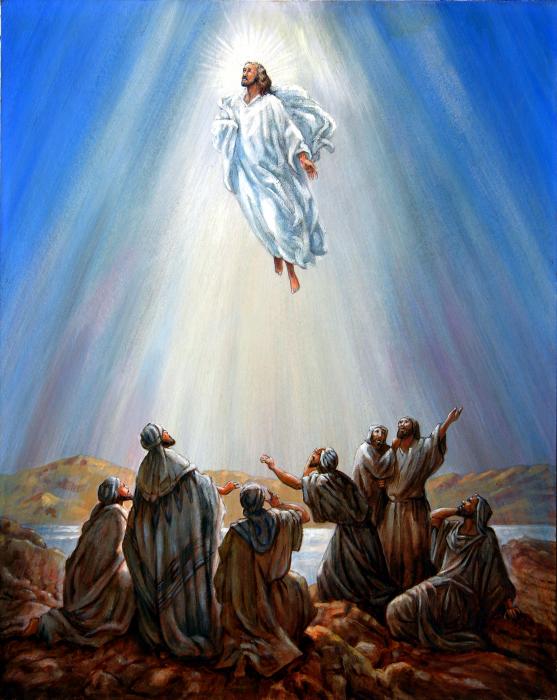

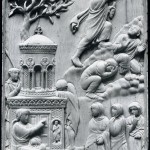
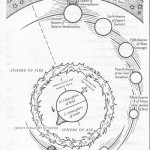


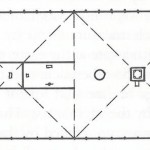








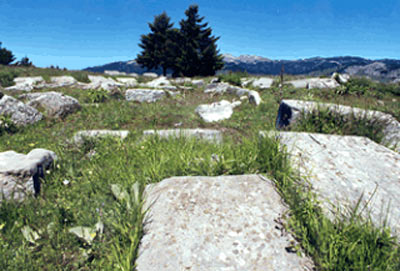 The event was said to have taken place on a hill over mount Oiti, just above the ancient city of
The event was said to have taken place on a hill over mount Oiti, just above the ancient city of 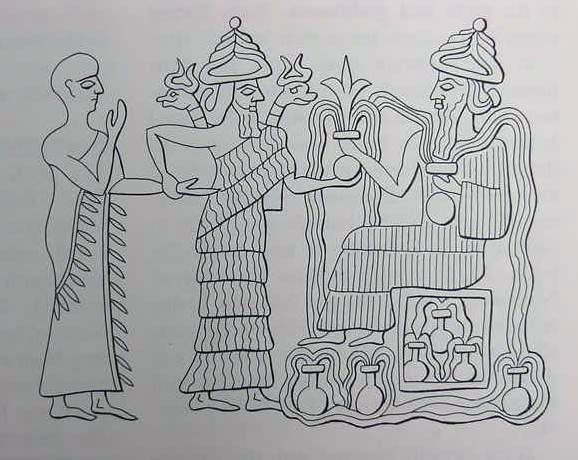
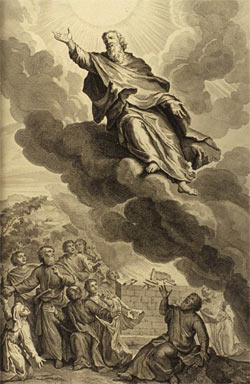 One of the most famous ascension stories in the Old Testament is the story of Enoch. Enoch was one of God’s favourite subjects. Patriarch Enoch was the great grand-father of Noah and the father of Methuselah. You will find him in the Book of Genesis where he is referred to as one of the ten Patriarchs before the great Deluge. According to the Old Testament, Pre-Deluge humans were said to live for a few hundred years. Enoch lived for 365 years, which was relatively short by the measure of that time.
One of the most famous ascension stories in the Old Testament is the story of Enoch. Enoch was one of God’s favourite subjects. Patriarch Enoch was the great grand-father of Noah and the father of Methuselah. You will find him in the Book of Genesis where he is referred to as one of the ten Patriarchs before the great Deluge. According to the Old Testament, Pre-Deluge humans were said to live for a few hundred years. Enoch lived for 365 years, which was relatively short by the measure of that time.